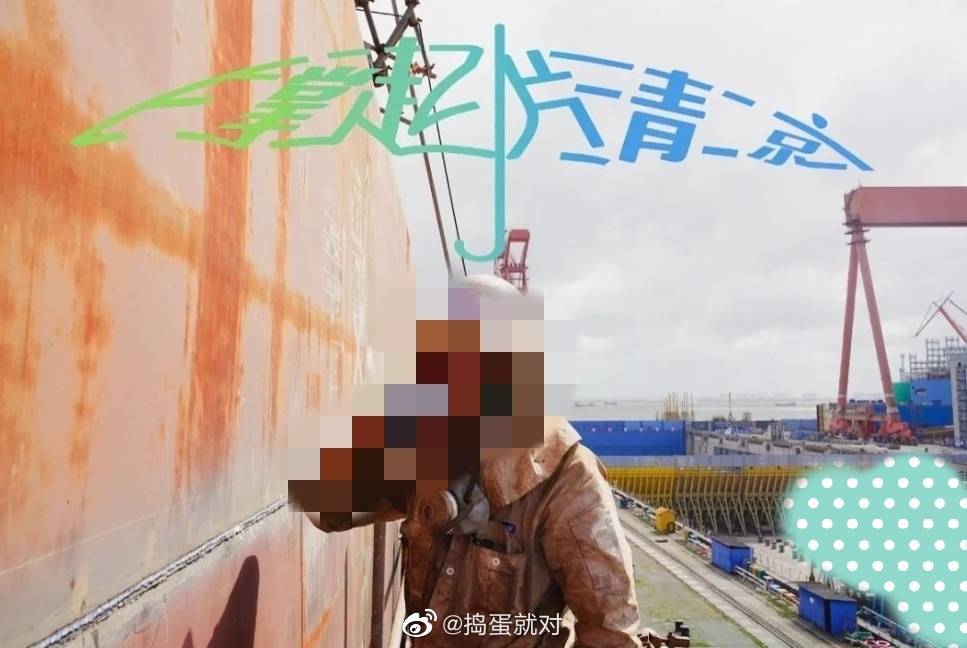they are not connected so there gaps in between, also, there could be more modules, so any estimation on waterline length is unreliable.
You are using an out of date browser. It may not display this or other websites correctly.
You should upgrade or use an alternative browser.
You should upgrade or use an alternative browser.
CV-18 Fujian/003 CATOBAR carrier thread
- Thread starter Jeff Head
- Start date
If there is an urgency to greatly scale up naval buildup, lets say China suddenly decides to build three or more carriers simultaneously. Will there be enough skilled workers to meet this target? Let's say China decides to enter a wartime economic state.
If there is an urgency to greatly scale up naval buildup, lets say China suddenly decides to build three or more carriers simultaneously. Will there be enough skilled workers to meet this target? Let's say China decides to enter a wartime economic state.
IMO, of course it CAN.
Even it's not an easy task for sure, but with their Industrial Capability today of course it can.
Just like US in WW2 wartime economy.
In the beginning of WW2, US only have a few Aircraft Carrier. After they move to wartime economy they pumping Essex class and other warships like sausages.
Maybe not in exact same numbers with Essex class. But three or four? Obviously they can.
If there is an urgency to greatly scale up naval buildup, lets say China suddenly decides to build three or more carriers simultaneously. Will there be enough skilled workers to meet this target? Let's say China decides to enter a wartime economic state.
The main challenge in something like this has to do with fielding the airwing and training the pilots and ship crew to become an effective unit.
Building empty hulls is a trivial (and strictly secondary) task compared to it. Especially for a country that has an extensive shipbuilding industry.
Intrepid
Major
I think yes. I feel, they are building a very good management system around their work, write down every thought and every step, so it is possible to scale up wotkforce very easy keeping a good quality.If there is an urgency to greatly scale up naval buildup, lets say China suddenly decides to build three or more carriers simultaneously. Will there be enough skilled workers to meet this target? Let's say China decides to enter a wartime economic state.
They copied our kind of implementing management systems and now they are better than the first world.
asif iqbal
Banned Idiot
we will start to see this carrier come together very quickly
those modules are built and now all they need to do is get them put together
if we know one thing, that is Chinese shipyards are best at that stage of the work and getting it launched
those modules are built and now all they need to do is get them put together
if we know one thing, that is Chinese shipyards are best at that stage of the work and getting it launched
Very optimistic.we will start to see this carrier come together very quickly
those modules are built and now all they need to do is get them put together
if we know one thing, that is Chinese shipyards are best at that stage of the work and getting it launched
It is a brand new design, without prior assembly experience.
The previous two carrier building was helped by the original drawings, manufacturing instruction modified by assembly / testing experiences, and with the original Ukrainian staff helping out the Chinese builders.
this time the shipyard has to found out all design issues/ mistakes on the go, and during local testing.
Considering that the carrier built like an onion, any issue with the core systems will make it impossible to test the later systems .
Means five, 6 month issue will shift the delivery date by thirty month.
Very optimistic.
It is a brand new design, without prior assembly experience.
The previous two carrier building was helped by the original drawings, manufacturing instruction modified by assembly / testing experiences, and with the original Ukrainian staff helping out the Chinese builders.
this time the shipyard has to found out all design issues/ mistakes on the go, and during local testing.
Considering that the carrier built like an onion, any issue with the core systems will make it impossible to test the later systems .
Means five, 6 month issue will shift the delivery date by thirty month.
Did ukrainian staff help china build liaoning and shandong?
Compared to the older carriers, this carrier will certainly take longer to built because its a new design, its bigger and has catapults, but its not certain that they will have years old delays. They already have built 2 carriers and its design could be even be closer to shandong (an enlarged shandong with catapults?) than one might think. Only time will tell.
Via @利刃斩海飞剪艏 from Weibo
This photo is so blurred that it doesnt really add anything to what we know. What is the satellite that takes these photos ?




